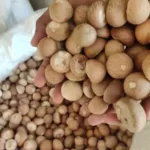Is it possible? Naysayers says No. But, the experience of Amanullah Khan proves otherwise. In Khan’s one acre plantation, there are 217 silver oak trees to support 217 pepper vines, 363 areca nut trees, and in its shade 1,200 coffee plants and 363 Vanilla vines. Total 2600.
Amanullaa Khan, a native of Sagara, Shivamogga dist. Karnataka, used every inch of his field for cultivation. All the crops are plantation one and income earning. He systematically arranged all these in his one acre land. Mr. Khan came from a very poor family without any education, started his life as an agricultural labour in a coffee plantation at the age of 10.
An Inspiration:
- As a saying goes, ‘if you experienced the hardship of life in your childhood, you will reach your goal at the end’, it is true in Mr. Khan’s life.
- He worked at a coffee plantation in Kalasa for 30 years as maintenance labor.
- Later he started working at areca and pineapple plantations.
- He worked with Pine-apple king, Late Mr.Abdul Rauf Saheb of Banavasi,Uttara Kannada dist., Karnataka and learnt the basics of crops like Pineapple, Banana, Ginger and Areca nut.
- He took lease of one acre of land and started cultivating Pineapple and Ginger in large quantity.
- Fortune and hard work favored him and he purchased 20 acres of land near Mankalale village near Sagara City.
- He invested all his knowledge and experience and made this parcel of land a University demonstration plot.
- If you are really interested in agriculture and wanted it to be your profession, you will get most of the practical knowledge at Mr.Khan’s farm.
- He says that, by mixed farming only farmer will survive.
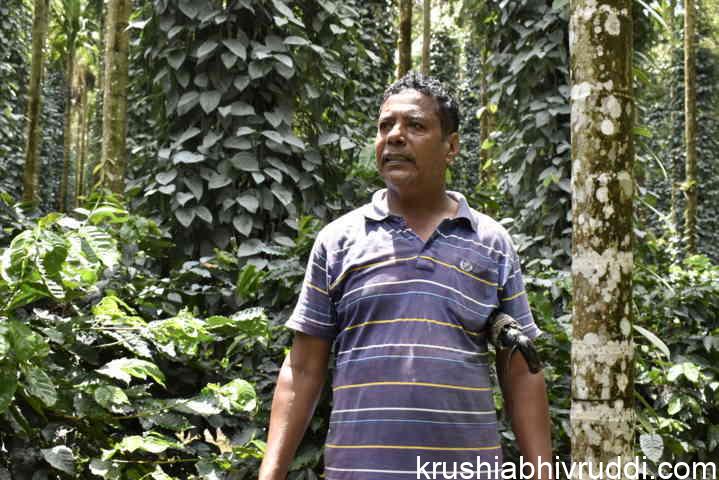
Crop planning:
- He purchased this parcel of land in 2015. Immediately, he planted silver oak plants (spacing 10×10 ft) and areca nut and coffee.
- Along with silver oak, he planted pepper.
- His idea was to earn double income in one acre land.
- In his 20 acres of plantation, he has grown 4,300 silver oak and 4,300 pepper vines.
- In between there are 7,200 areca nut plants, 42,000 Arabica coffee and last year, he planted vanilla also.
- He got a yield of 0.5 to 1 kg pepper in 2 years and yield is increasing by year.
- Pepper vines are in 7th year and he is expecting an average of 10 kg dry pepper per vine.
Coffee plants started yielding from the 2nd year and he is getting around 2-3 kg parchment coffee beans per plant. He has grown Areca nut as a shade plant and is getting an average of 1 kg red supari per plant. Generally, if plant gets sufficient sunlight, areca starts yielding from the 5th year. He is expecting good yield from next season onwards.
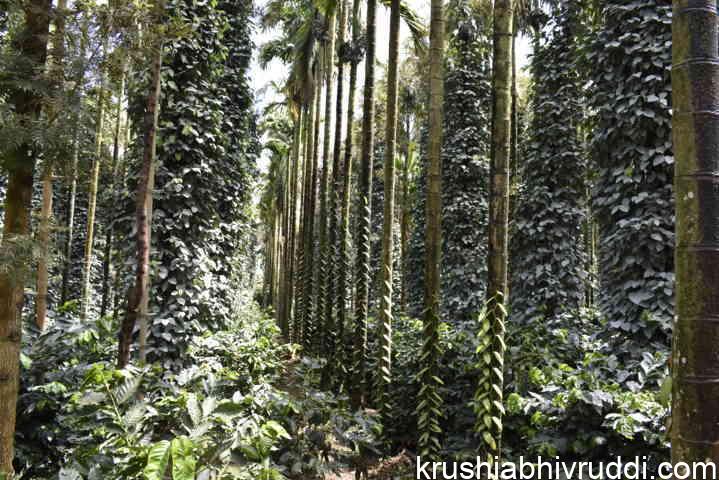
No competition between crops:
- Growing coffee it is not profitable since 25 years.
- Market and price of Areca, is volatile. Khan survived because of pepper.
- He is aware of the situation of 1972.
- On that particular year, price of areca was less than the price of paddy.
- If we depend on a single crop, we will definitely face hardships.
- If market collapses, with no income source we suffer.
- If there are multiple crops, we survive, he says. Keeping this philosophy in mind, he cultivated many crops of economic value.
- Coffee requires shade; Pepper requires support and partial shade.
- Areca will grow to a formidable height.

Why silver oak?
In Coffee plantations, planters keep forest trees for shade purpose. To fill the gap, they plant Haluvana (Erythrina) and Gliricidia. These plants require two pruning maintenances per year and this in laborious. These plants are not economically valuable and they provide only shade. But, Silver oak is a valuable tree after few years. It supports pepper vines and has multiple uses.

Future of Areca:
Amanulla Khan says, ‘Future of Areca depends on Supreme Court verdict. There is a pending case in SC. In case of an unfavorable judgment, areca farmers will suffer’. In Khan’s scheme of things, he do not depend on Areca and hence, no consequences in case of an adverse judgemant.
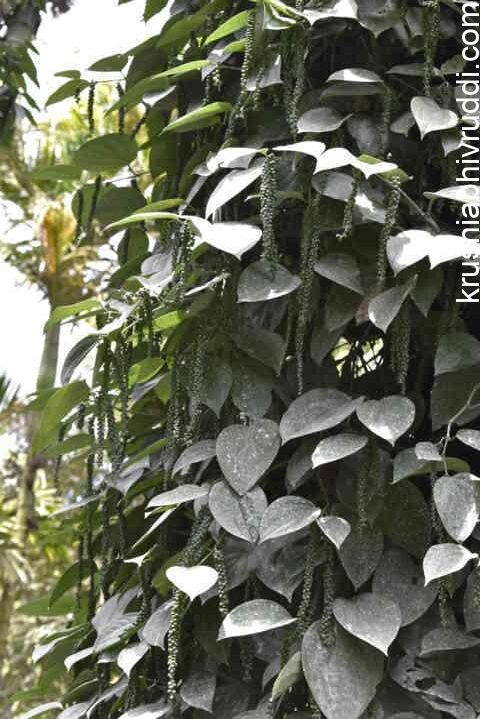
Plant density logic:
- Normally, farmers plant areca saplings in 9×9 ft distance. In this distance, it is not possible to accommodate any intercrops.
- For this reason, he planted areca nut in 20 feet rows and a plant distance of 6 feet.
- Hence, 363 plants can be accommodated per acre.
- But, there is lot of opportunities to intercrops.
- Between 2 areca plants, Khan planted silver oak.
- Coffee plants are planted at a distance of 6X6 ft.
- So, an acre of land can accommodate 1,200 plants. Khan followed the same pattern.
- Between 2 rows of areca, 6 feet was empty and so is, surrounding 3 feet.
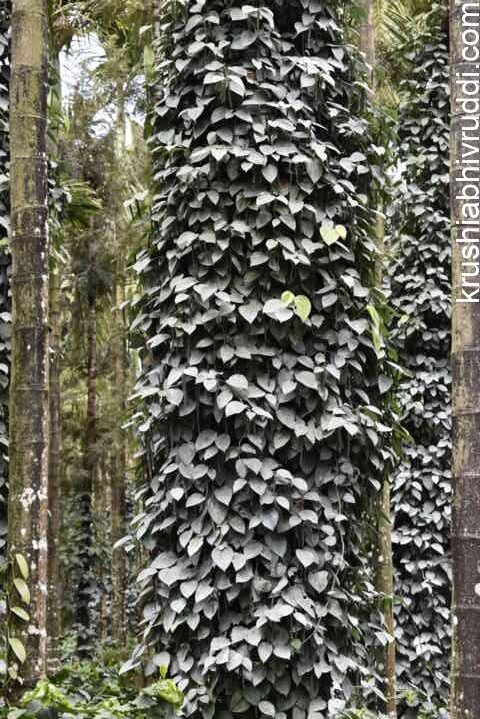
Success in Pepper cultivation:
- Pepper is very sensitive to heavy rainfall. If areca is used to support pepper vine, chances of diseases is more because of heavy rain droplets.
- But, with silver, pest infestation is less.
- Regular maintenance is very important for Pepper.
- Before monsoon, one Bordeaux spray, another spray in September and a third spray is needed in case of continuation of rain.
- In monsoon, COC drenching is required to prevent root infection. 6-7 Split dose of fertilizer application is also needed.
Khan uses 10 kg of organic manure and 1 kg of neem cake per plant He is facing water shortages. He has 3 bore wells; but the yield is ½, 1 inch only. In this limited resource, he is maintaining all of his 20 acres of land. With less water, disease incidence in pepper is less. But, Areca require more water.‘I am not so much interested in areca nut”, he says.
Author: Madhava Aithal, publisher, Rutha Media, Bangalore



